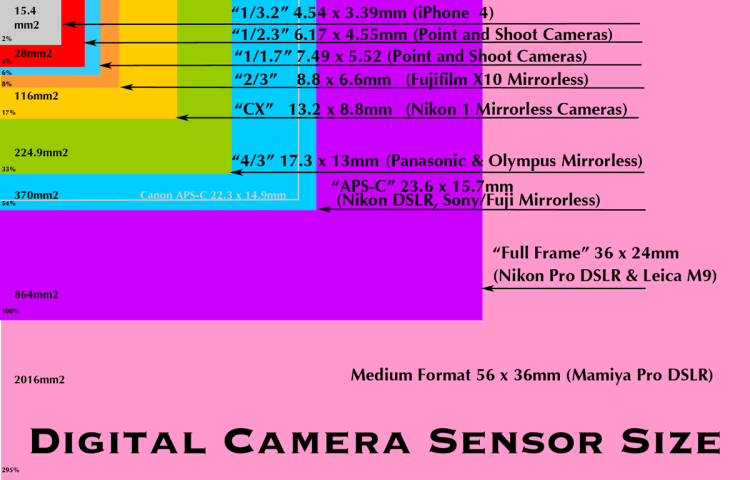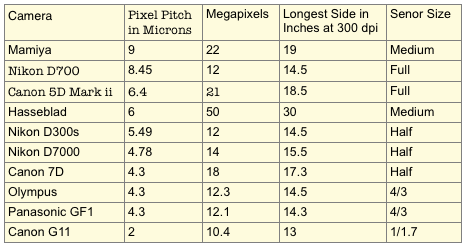Originally Posted April 26th, 2015
Sony has been producing full frame mirrorless interchangeable cameras since October 2013, prior to this time, the only full frame mirrorless camera was a Leica rangefinder which started at $6000. Since 2013 Sony has produced and A7 (now selling at $1500), the A7R $2300 in Oct 2013, the A7S $2500 in April 2014 and then the A7II in November 2014 $2000. In one year they have created a low light 12-megapixel camera the A7S, a 24-megapixel camera with 5 axis image stabilisation and their high resolution 36 megapixel A7R. A range that makes it quite difficult to choose, if you are looking at investing in a full frame mirrorless. A good discussion on the implications of resolutions can be found in Nasim Mansurov’s article Camera Resolution Explained.
Why Not Switch to Full Frame Mirrorless
Mirrorless cameras are lighter and sometimes more internet savvy than DSLR cameras, still, Nikon and Canon sell a lot of DSLR cameras. These mirrored cameras are much larger and more difficult to carry around so why hasn’t everyone been converting to Sony’s smaller lighter mirrorless cameras. Well, the first issue that is always raised is the speed and accuracy of autofocus for things like wildlife and sports photography. The experts have been dissecting this issue and in general agree that the difference is very close, unless of course you are shooting professionally and then there are some fine differences that are important. So if you are a very serious sports or wildlife photographer mirrorless cameras might not be for you.
The more important issue is around lenses, as lenses are always the first consideration when you are looking at purchasing a camera. When you purchase a camera you are locking into a manufactures lenses and any third parties that might be produced for their lens mount. Again wildlife and sports photographers have found a poor selection of telephoto lenses and this coupled with the focusing issue keeps them mostly in the DSLR world.
Landscape Photographers and Mirrorless
Landscape photographers, however, don’t really have a big issue with the autofocus nor the telephoto problem. They tend toward wider angle prime lenses and tripod situations, occasionally using a telephoto lens. So for these photographers and I think the street photographers who greatly benefit from a smaller camera kit, a mirrorless full frame is a much better solution than a DSLR. So the question for these photographers is are there enough high-quality prime lenses.
I think the answer here is yes. The following lenses are an edited list of what appear to be the best options in terms of optic quality and integration with the Sony A7 series. In other words, the lenses that use the Sony autofocus system. I have chosen to only list prime lenses as these will be of the highest quality.
Integrated Auto Focus Options
- Sony’s Sonnar FE 35mm f/2.8 (branded by Zeiss) at $800. (49mm thread)
- Zeiss Batis 25mm f/2 at $1300 is not yet rated by Photozone. (67mm thread)
- Sony Distagon FE 35mm f/1.4 (branded by Zeiss) at $1600 (72mm thread)
- Sony Sonnar FE 55mm f/1.8 at $1000 (49mm thread)
- Zeiss Batis 85mm f/1.8 at $1200 (67mm thread)
(The remainder of the wide angle lens from third parties are manual focus lenses.)
As you can see the key lenses are all available for the street photographer and with the exception of perhaps a telephoto the landscape photographer has all the primary lens they would need as well. Obviously the selection will improve with Zeiss now manufacturing specifically for the A7 series, but for now, I think these are enough to consider a move to mirrorless full frame for these photographers. If they are inclined toward operating in a manual focus world then there is a much larger collection of lenses. Brian Smith does and excellent job of providing a complete collection of all the lenses built for these cameras in his article Ultimate Guide to E-Mount FE Lenses for Sony A7 A7R A7s A7II.
Some Concerns
There are some concerns around the engineering of the camera, that might dissuade some photographers from making the leap to the Sony Camera. As with most cameras, there will be engineering issues that seem to interfere with the process of capturing images or the quality of the images that have been captured. Sony has a few issues that have been raised by the experts as they use the A7 series in their professional work.
Lens and Sensor Proximity Issue
There is some discussion around the proximity of the lens to the sensor that causes the camera to have banding distortion when using lenses below 35mm in the higher megapixel versions of the A7 series of cameras. I have not been able to track down a good description of this but there seems to also be a relationship between this problem and the pixel pitch of the sensor.
Lossy File Compression
Apparently, Sony has chosen to use a LOSSY file compression with their RAW files, this was highlighted in an article on the digloyd blog. It was also explored in great detail on the blog The Last Word. Without getting into detail Sony cameras produce an RAW file, which is supposed to contain all the RAW data from the sensor. This is true of most DSLR and Mirrorless interchange cameras. The difference here is Sony, for some unknown reason, has decided (unlike others) to compress the RAW file. Even worse they have chosen to do so by using LOSSY compression. Resulting in what would appear to be some loss of RAW data and in some cases damage to the digital files. [Sony has now introduced uncompressed RAW]
Shutter Noise
The A7 and A7R have one of the noisiest shutters in the industry, some say louder than a mirror flapping away in a DSLR camera. One's first reaction to the noise is perhaps there is a malfunction or some bad engineering involved. Since this issue was first raised, Sony came out with the A7s which can be operated in a completely silent mode. Then with their new A7II, they have managed to reduce the sound to some degree. I am guessing when they come out with an A7sII it will be quieter as well. [the newer Sony Alpha cameras have solved this problem]
Anti-aliasing Filter
Up until recently all DSLRs had anti-aliasing filters in them to prevent moire, this is also known as an optical low-pass filter, blur filter or AA filter. Simply put it is a filter that is located between the lens and the sensor and it prevents moire by defocusing the image or reducing the sharpness of the image. Now that most moire can be dealt with in post processing, these filters are being removed from DSLR and Mirrorless cameras. However Sony still has them in the A7s, A7 and A7II the only exception is the A7R, it is unclear why they would do this certainly it is of no benefit to a photographer unless they are using the camera for video.
It might be of some interest to note that Pentax/Ricoh make a camera where the filter can be turned off or on, they do this by mimicking the filters effect by introducing micro vibrations to the sensor when the feature is turned on. This is done by using the sensor cleaning engine which basically defocuses and reduces the sharpness of the image.





















